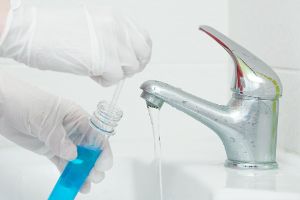
Clean drinking water is fundamental to a healthy lifestyle, yet many people are often unaware of the potential contaminants lurking in their water supply. Understanding these common contaminants and knowing how testing can identify them is crucial for ensuring safe drinking water.
Understanding Common Contaminants In Drinking Water
Water is essential for life, but not all water is safe to drink. Common contaminants can infiltrate drinking water through various means, including surface activities and industrial processes. These contaminants can range from chemical elements to organic materials suspended in the water.
Types Of Water Contaminants
To ensure understanding of your water’s safety when testing, it is vital to understand the different types of contaminants that can be present in water. These primarily fall under three categories:
- Microbial Contaminants: These include bacteria, viruses, and parasites. Total coliform bacteria are often used as an indicator of microbial contamination.
- Inorganic Contaminants: This category includes harmful chemicals like lead, mercury, and arsenic, which can seep into groundwater from industrial waste or natural mineral deposits.
- Organic Contaminants: These are synthetic or volatile organic compounds originating from industrial discharges, agriculture runoff, and even household products.
Surface Water Vs. Groundwater Contamination
The sources of water, like surface and groundwater, also play a significant role in contamination risks. Surface water sources, like rivers and lakes, are more susceptible to contamination from surface activities, agricultural runoff, and industrial effluents.
Groundwater, tapped through wells, might be less exposed to surface contaminants but can still be vulnerable to chemical elements from natural deposits or leaching from landfills.
The Importance Of Testing Private Water Supplies
Public water supplies undergo regular monitoring to ensure compliance with safety standards. However, private wells and smaller systems may not always be subject to the same rigorous testing. Therefore, personal water testing is highly recommended to identify and mitigate any potential health risks.
Potential Health Effects Of Contaminated Water
Drinking water contaminated with harmful substances can lead to various health issues, including gastrointestinal diseases, reproductive problems, and even neurological disorders. Some specific health risks associated with common contaminants are:
- Lead: Can cause developmental issues in children and kidney problems in adults.
- Nitrates: High levels can lead to methemoglobinemia or “blue baby syndrome” in infants.
- Arsenic: Long-term exposure can cause cancer and skin lesions.
- Pathogens: Bacteria and viruses may lead to illnesses like cholera and dysentery.
Water Monitoring Technologies
Modern technologies have revolutionized the way we test and monitor water quality. Advanced testing methods can identify contaminants down to the smallest concentrations, ensuring a thorough evaluation of water purity.
- Ion Chromatography: Used to detect and measure ions like nitrates, sulfates, and chlorides.
- Mass Spectrometry: Helps identify and quantify trace elements and compounds in water.
- Colorimetric Analysis: Employs color changes to detect specific chemicals, commonly used for chlorine and other disinfectants.
- Microbiological Testing: Uses biological means to detect pathogens and indicate overall water safety.
Benefits Of Regular Water Testing
- Early Detection: Identifying contaminants early allows for swift action to mitigate health risks.
- Compliance With Safety Standards: Ensures your water meets local and national guidelines for safe drinking water.
- Improved Water Quality: Helps in making informed decisions about water treatment and purification solutions.
FAQs
Is Bottled Water Safer Than Tap Water?
Bottled water must meet safety standards, but some brands may still contain contaminants. Testing your drinking water provides the most accurate information.
How Often Should I Test My Water?
Testing at least once a year is recommended, but you should test more frequently if you notice changes in taste, color, or odor.
Can Contaminants Be Detected Just By Taste Or Smell?
Some contaminants can, but many harmful substances are tasteless, odorless, and colorless.
Ensuring Safe Drinking Water for Your Family
Ensuring the purity of your drinking water is essential for the health and well-being of your family. Regular testing and using the right purification techniques can effectively mitigate the risks posed by common contaminants. With the right knowledge and resources, you can take proactive steps to enjoy safe and clean drinking water.
Take the Next Step In Water Safety With M3 Environmental LLC
Ready to ensure the purity of your drinking water in Monterey, CA? Contact M3 Environmental LLC today for professional testing and peace of mind. We’re dedicated to helping you identify and eliminate water contaminants to safeguard your health and your family’s well-being.





